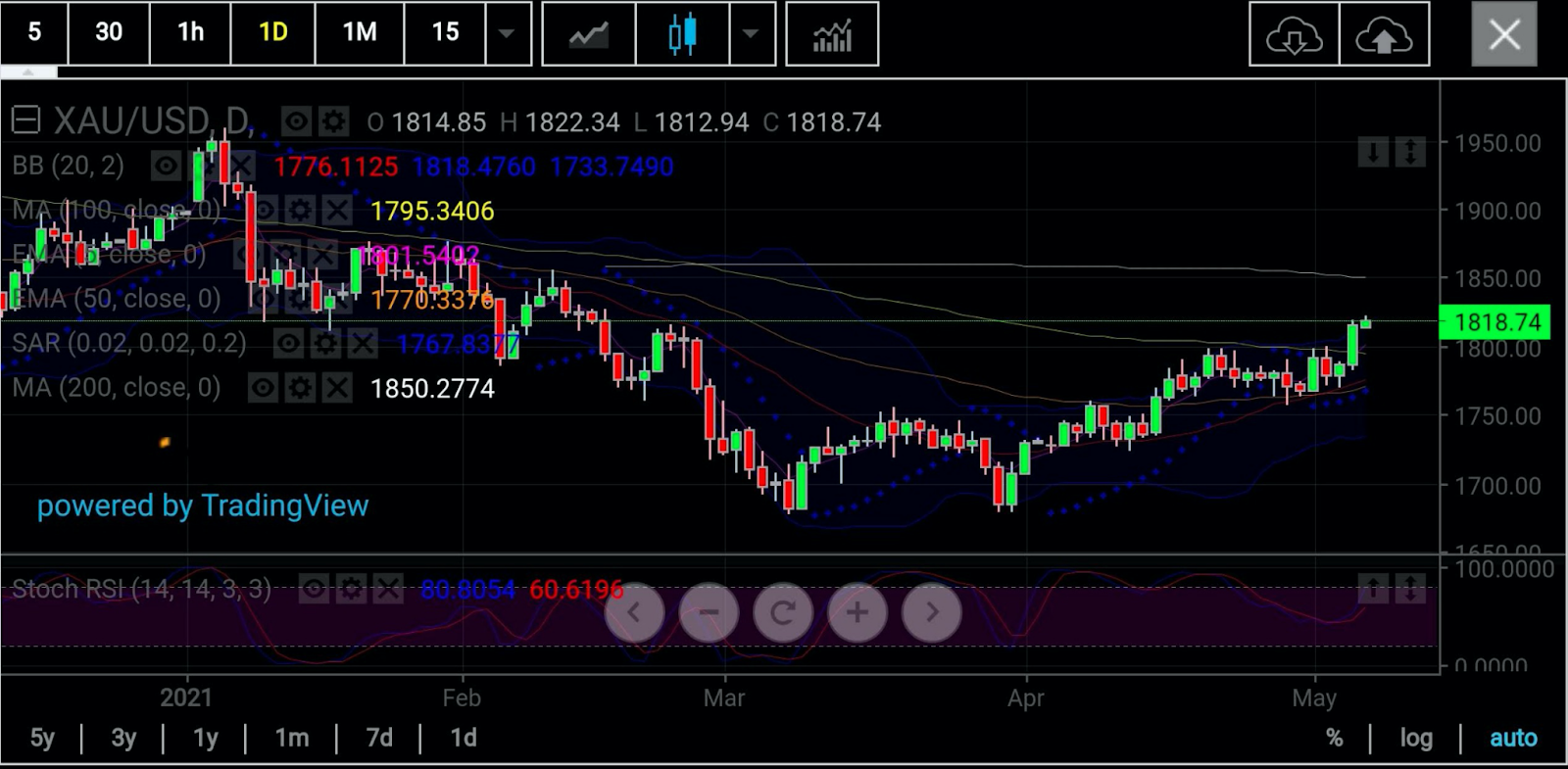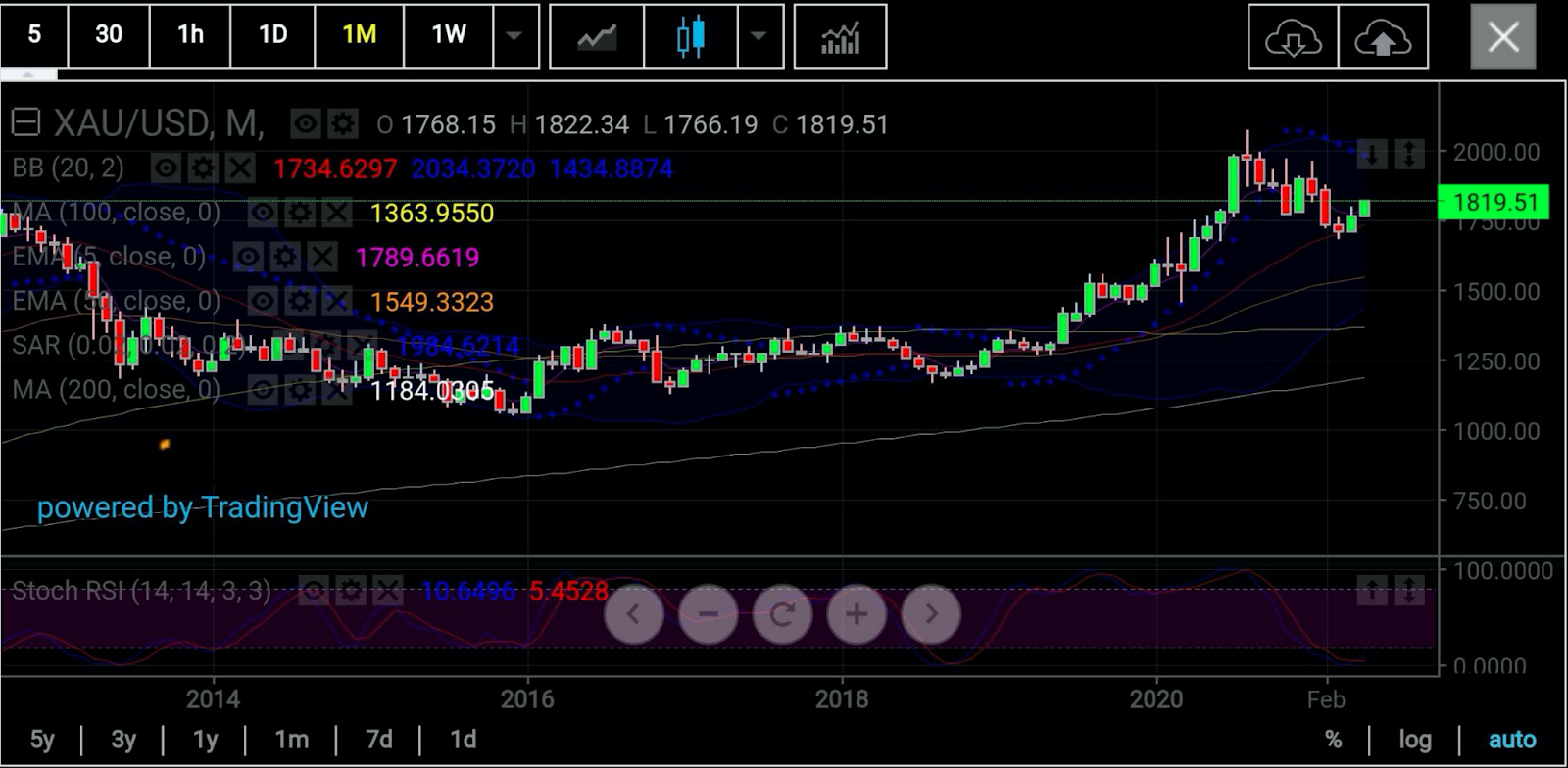Gold’s return to above $1,800 is logical, overdue and even remarkable—considering the tortuous journey it’s been on this year.
But, of course, what really matters is where it goes from here. So will this rally last?
Since January, gold has been on a hellish ride that actually began in August last year—when it came off its record highs and meandered for a few months before stumbling into a systemic decay from November, when the first breakthroughs in COVID-19 vaccines were announced.
Except for gold bugs—who have sworn allegiance to the yellow metal, come what may—conviction has been a rare commodity for the average long investor who tried to stay true to gold through the travails of the past six months.
Thus, with its recapture of the $1,800 berth on Thursday after a 10-week struggle, multiple price demands were set for gold by analysts unwilling to agree on the sustenance of its breakout without those levels being met.
Phillip Streible, chief market strategist at Blueline Futures in Chicago, told Investing.com on Thursday:
“I’m not convinced yet that we’re there with gold. I need to see a few daily closings above the $1,800 level to be convinced that we can proceed to the $1,900 area and challenge the $2,000 highs of August.”
“If you want an inflation hedge, there are lots of other commodities now where you can get that, from copper to even ags like soybeans.”
Inflation: A Painful Reference So Far For Gold Longs
The reference to inflation is a painful one for many who made a beeline to gold in recent months, on the premise of the metal being called the best store of value and one to count on during both financial and political troubles.
The trouble though is gold was incredibly late to the inflation party even as prices of other commodities like oil, lumber and even coffee took off on supply strains and demand ripping from an economy reopening after months of COVID-lockdowns.
Ole Hansen, head of commodities strategy at Saxo Bank, said gold’s breach of $1,800 was an important step, but the metal had a lot more to prove.
“Buy stops from long-term shorts has yet to be challenged, so now comes the hard work of staying above,” Hansen said in a tweet. With gold taking out $1,818 by Thursday itself, this must now be “followed by $1,851”, he added.

All charts courtesy of S.K. Dixit Charting
Sunil Kumar Dixit of S.K. Dixit Charting in Kolkata, India, said gold had established a strong counter trend after weeks of moribund trading, but added that the action could go both ways from here.

“The current rally will continue as long as the price holds above $1,812. A move below that will likely initiate a correction to the 5-Day Extraordinary Moving Average of $1,805 that could extend further below that to $1,798 - $1,785 - $1,770.”

Despite the inflection point that gold appeared to be in, Dixit said the Stochastic Relative Strength Indicator was positive, supporting moves to the upside.
“There was clearly a double-bottom at the $1,676 and $1,677 levels before the breakout above the horizontal resistance of $1,755. Now, with targets of $1,830 that mark a 38.2% Fibonacci Retracement from earlier lows, there’s chance of an extension to the 200-Day Simple Moving Average of $1,850.”
Not Many Overwhelmingly Bullish On Gold
But some of the observations on gold after Thursday’s spike were outrightly bearish.
Hours after the breakout above $1,800 on Thursday, HSBC analysts downgraded their call on the metal to a “neutral”, saying they did not expect it to move much higher over the next quarter to half year.
HSBC noted that the US 10-year Treasury yield appears to have stabilised around 1.6% after hitting recent highs of 1.75% at end-March, signalling that inflation concerns may be abating for the time being.
On inflation itself, they said it was:
- “Transitory” (agreeing with Fed Chief Jay Powell)
- Running on elevated expectations but appears to have peaked.
- Mild with central banks still committed to keeping loose monetary policy.
In conclusion, they said of gold:
"Short-term, we have downgraded gold to neutral as we don't expect significant capital appreciation over the next 3-6 months, especially with bond yields still elevated."
The IG Client Sentiment, meanwhile, called for a shorting of gold, saying 81.24% of gold traders were long on the market.
“We typically take a contrarian view to crowd sentiment, and the fact traders are net-long suggests gold prices may continue to fall,” it said. “Traders are more net-long than yesterday but less net-long from last week. The combination of current positioning and recent changes gives us a further mixed gold trading bias.”
Despite such overwhelmingly bearish views, gold was doing just fine at the time of writing, and appeared to be on the cusp of extending Thursday’s gains.
By Friday’s noon trading in Singapore (0400 GMT), benchmark gold futures on New York’s COMEX were hovering at around $1,820, after peaking at just above $1,822. Since Wednesday’s settlement, the contract has gained a total of some $35, or 2%.
The spot price of gold was almost identical to that of the futures. Investors sometimes decide on the direction for gold by looking at the spot price, which reflects bullion for prompt delivery.
US Jobs Data Litmus Test For Gold
One thing though: both bulls and bears agree that gold’s litmus test will be the US nonfarm payrolls data for April, due at 8:30 AM (12:30 GMT) on Friday. Employment numbers have rapidly improved in the United States over the past three months and the latest nonfarm payrolls are expected to print a growth of 978,000 for April, building onto the March gains of 916,000.
Thomas Westwater, a gold analyst who blogs on DailyFX, wrote:
“The Fed believes the pickup in inflation will be temporary, or as Chair Powell likes to say, transitory—perhaps his favorite word if not one of his most remarked."
“Now, that is not to say this week’s NFP print won’t move gold prices because it likely will.”
Gold had a scorching run in mid-2020 when it rose from March lows of under $1,500 to reach record highs of nearly $2,100 by August, responding to inflationary concerns sparked by the first US fiscal relief of $3 trillion approved for the COVID-19.
Breakthroughs in vaccine development since November, along with optimism of economic recovery, however, forced gold to close 2020 trading at just below $1,900. This year, the rut worsened as gold fell first to $1,800 levels in January, then collapsed to below $1,660 at one point in March.
Such weakness in gold is remarkable if considered from the perspective of the $1.9 trillion COVID-19 stimulus passed by Congress in March, and the Biden administration’s plans for an additional infrastructure spending of $2.2 trillion.
Disclaimer: Barani Krishnan uses a range of views outside his own to bring diversity to his analysis of any market. For neutrality, he sometimes presents contrarian views and market variables. He does not hold a position in the commodities and securities he writes about.
